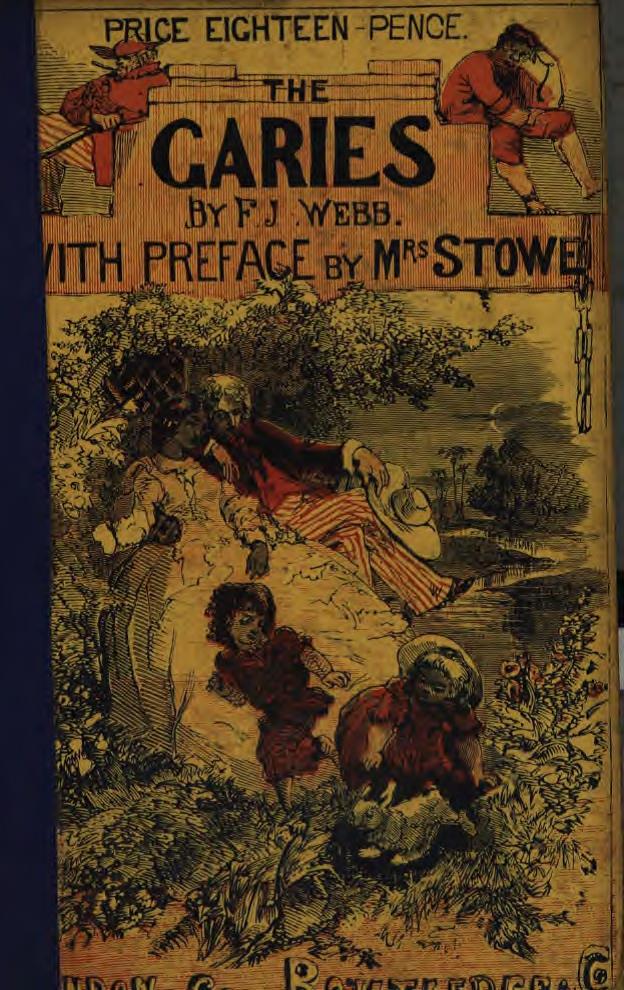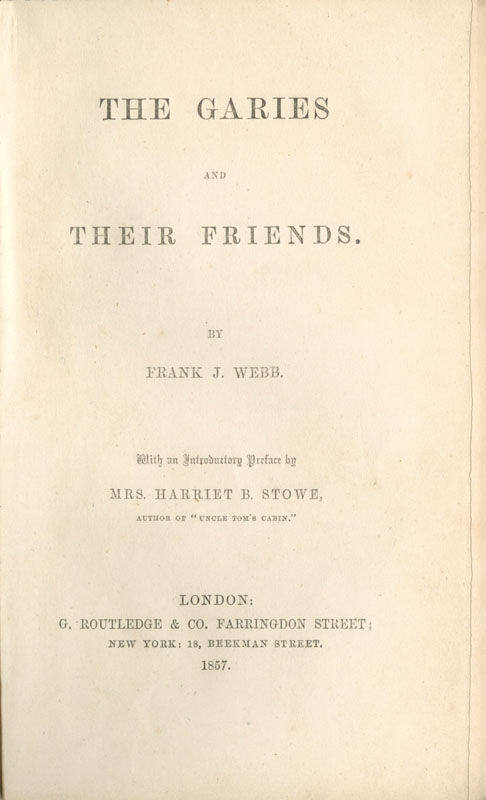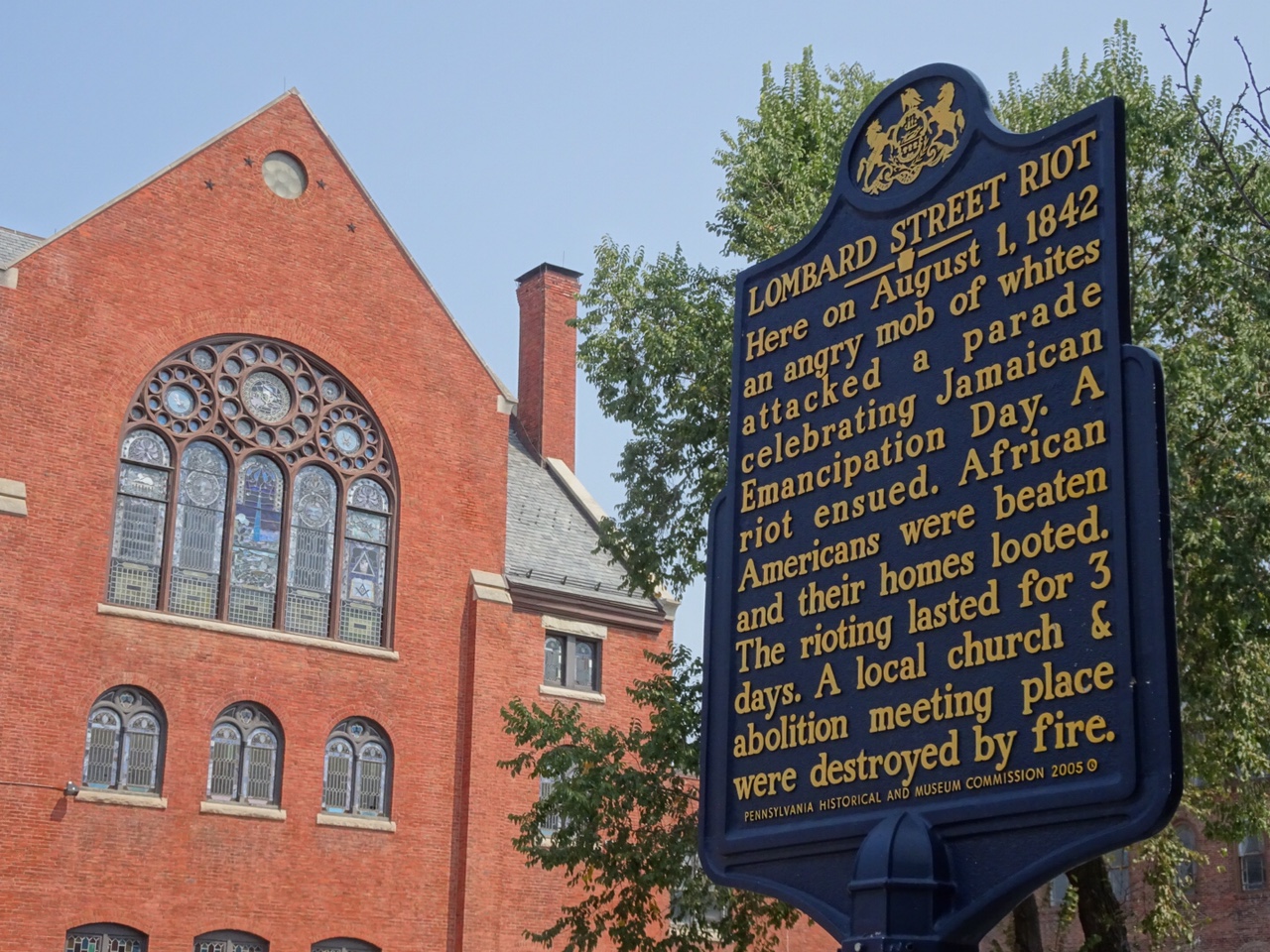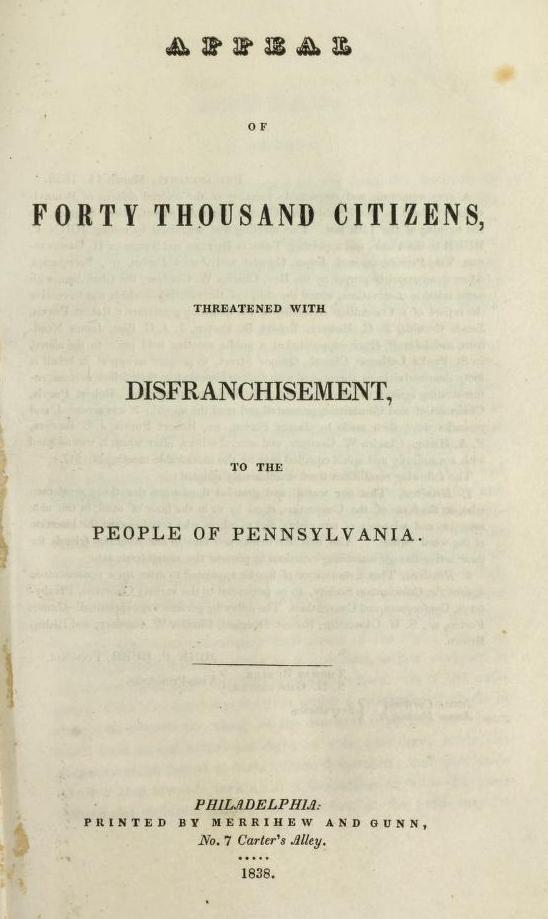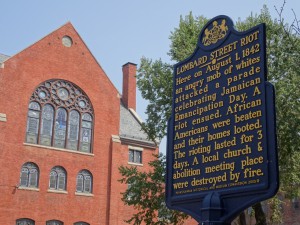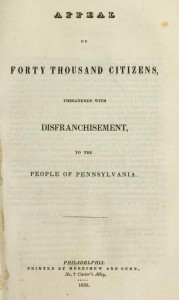Garies (The) and Their Friends
Essay
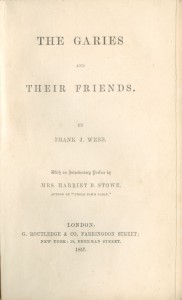
Published in London in 1857, Frank J. Webb’s The Garies and Their Friends is among the earliest novels written by an African American. Although it is not strictly a historical novel, The Garies reflects the deteriorating conditions of the free Black community in Philadelphia during Webb’s childhood and early adulthood, in particular, the 1838 disenfranchisement of Black men by the Pennsylvania legislature and the anti-abolitionist and anti-Black violence of the 1830s and 1840s.
Born to free Black residents of Philadelphia, Webb (1828-94) was the youngest of his parents’ five children, one of whom died in infancy. His father, Francis Webb (1788-1829), was educated and active in various church and civic organizations, and his mother, Louisa Burr Webb (1784-1878), was the illegitimate, mixed-race daughter of former U.S. vice president Aaron Burr (1756-1836). Francis and Louisa participated in an unsuccessful colonization project in Haiti, returning to Philadelphia in 1826, sixteen months before Frank’s birth.
The Garies narrates the fortunes of two families over several decades. Clarence Garie is a slaveholder living in Georgia with Emily, his slave and common-law wife, and their two children, also named Clarence and Emily. Because their marriage is not legally recognized in Georgia, and their children therefore considered illegitimate, they decide to move north to Philadelphia, where they are met and welcomed by Mr. and Mrs. Ellis and their three children, Esther, Caddie, and Charlie. We follow the Garies and the Ellises as they raise their children in an atmosphere of often vicious racial discrimination. The light-skinned Garie children are forced to leave their school after it is discovered that they have a mixed-race mother and the white parents object. Later, Charlie Ellis finds that his skin color prevents him from being hired for positions that he is otherwise qualified for. When an “Abolitionist” businessman offers to take him on as an apprentice, the other employees in the office refuse to work as long as Charlie is permitted to remain, and so Charlie is let go.
The central event in the novel is a graphically-rendered race riot, evoking the historical riots of 1834, 1838, 1842, and 1849. In Webb’s fictionalized account, two plots spur the violence: a plot by greedy and jealous whites to destroy and take possession of Black-owned property, and a plot to defraud the Garie children of their inheritance. Mr. Walters, a wealthy Black investor in real estate, probably based in part on the prominent Philadelphia businessman and activist James Forten Sr. (1766-1842), converts his home into a temporary fortress and, with the Ellises, successfully defends his property from the violent mob. The Garies are less fortunate. Mr. Garie is shot as part of the scheme to claim his estate, Mrs. Garie dies giving birth to a stillborn child, and little Clarence and Em are left orphans, swindled of their inheritance. The novel’s final six chapters take place “many years” later. In New York, Clarence Garie is exposed attempting to pass as white. He returns to Emily—who has stayed in Philadelphia and chosen to identify as Black—and dies. For the other characters, though, the plot has a conventionally happy resolution. Mr. Walters marries Esther Ellis and Charlie Ellis marries Emily Garie, whose inheritance is restored.
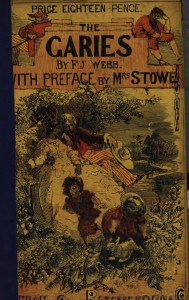
The Garies was initially published by the British publisher George Routledge in both a “cheap series” edition and a “library” edition. Webb’s novel was not read widely in the United States , and the only known book review in the United States was reprinted from a London source in Frederick Douglass’ Paper. Both Routledge editions featured prefaces by Lord Brougham (1788-1868), who was influential in abolishing slavery in Britain, and Harriet Beecher Stowe (1811-96). (Stowe was acquainted with Webb, as his wife Mary gave dramatic readings of scenes from Uncle Tom’s Cabin.) Stowe’s preface casts Webb’s novel as addressing whether “the race at present held as slaves [are] capable of freedom, self-government, and progress.” It is precisely this perceived emphasis on representations of Black bourgeois respectability, to the exclusion of a more direct attack on the institution of slavery, that led the first wave of twentieth-century critics to denounce Webb’s novel as insufficiently principled. More recently, critics have emphasized the novel’s depiction of racism and discrimination in the North, what Werner Sollors called “an encyclopedia of manifestations of racial hatred and segregation from cradle to grave.” Sollors also observed how closely Webb’s representation of antebellum racism anticipated the major concerns of the civil rights movement, including housing and employment discrimination and segregated schools.
Katherine Henry is Associate Professor of English at Temple University, specializing in American literature before 1865. Her current book project is titled Ghosts of Liberty: Civic Unrest and the Philadelphia Gothic, 1830-1855. (Author information current at time of publication.)
Copyright 2015, Rutgers University
